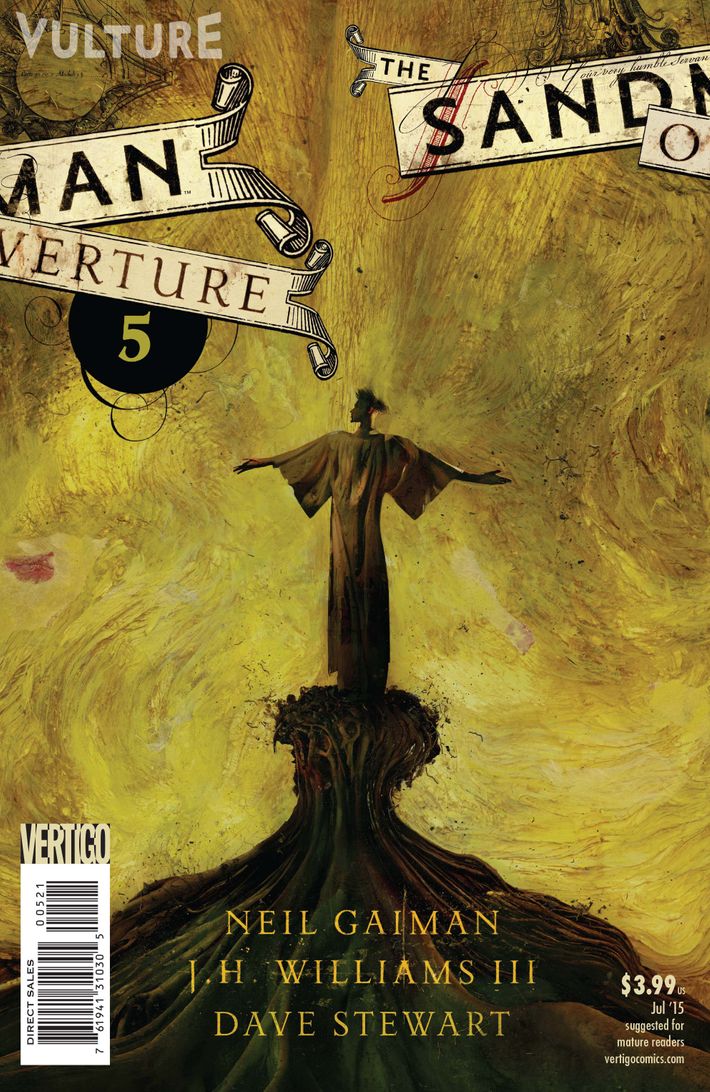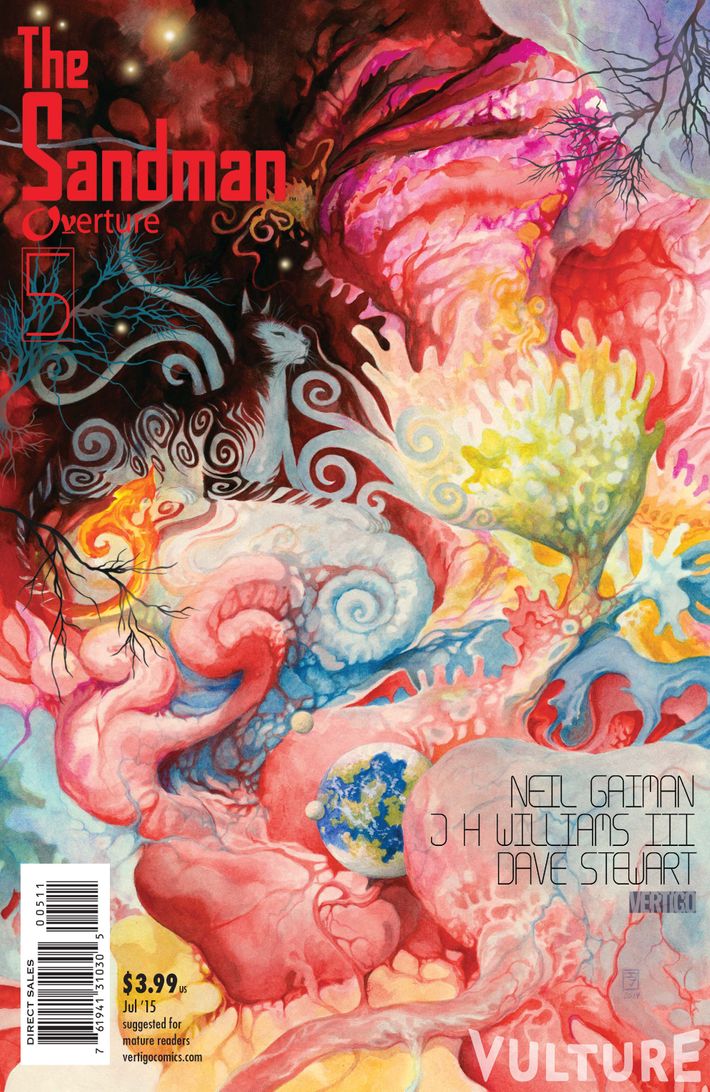
It’s been a quarter-century since Neil Gaiman’s Sandman first hit stands, and it still looms large. The 75-issue comics series followed the challenges and wanderings of Dream, a supernatural being from a family of abstract entities known as the Endless. The series, published by DC Comics, became a cultural sensation that transcended traditional comics fandom and left a lasting impression in fantasy storytelling.
So it was no small event when Gaiman announced in 2013 that he — along with acclaimed artist J.H. Williams III — would be launching a prequel to the series, entitled Sandman: Overture. Gaiman had already revisited Dream in a 2004 compilation of short comics stories called Endless Nights, but Overture was to be a full story arc that would lead directly into the opening of the original Sandman.
Four issues of the miniseries have been published so far, and they’re a rare comics experience. Each installment is rich with text and filled with double-page artwork upon which the eyes feast. The fifth and penultimate issue hits stands tomorrow, and we have an exclusive look at pages and variant covers for it. We also got to catch up with Gaiman and talk about what he’s learned — and hasn’t learned — about Sandman in the decades since it debuted.
What do you know about Dream now that you didn’t when you were 26 and starting Sandman?
It’s very strange. I know how the story ended, which I didn’t when I was 26. I had ideas of how it ended, but I didn’t know. Having just finished the whole of Overture, it gave me a whole chunk of insight into the first story line [of Sandman], which I didn’t have when I wrote it. There was stuff that I sort of knew. I knew that Dream was exhausted beyond all trying when the story began. I knew he had come from a victory of a sort, and I knew it was galaxies away. I knew how absolutely tired and trashed he was. Those were all things I knew. But now that I’ve written it, I go back and go, “Oh, that’s why this happened,” and “That’s why that happened.” That’s really strange for me.
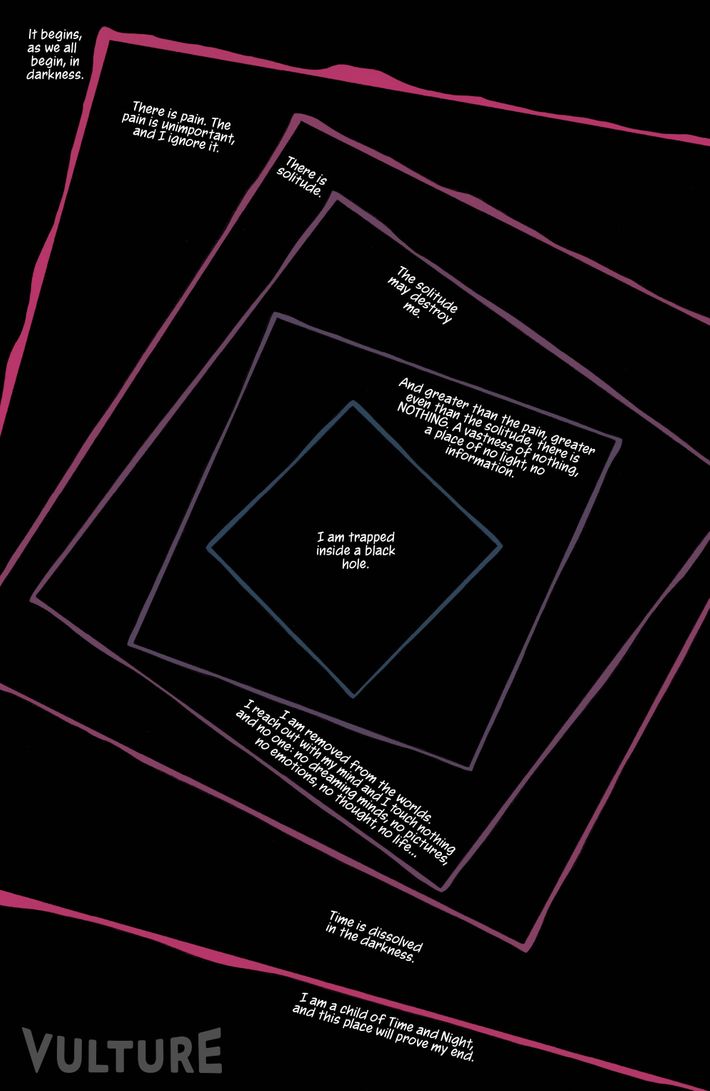
You sound like you feel as though Dream exists outside of you and your mind. To what extent are you just plucking him from the ether?
In a weird kind of way. Are you plucking from the ether? Kind of. Are you making stuff up? Kind of. It’s more that you can do the equivalent of saying, “This character is behaving like this because he’s heartbroken.” But then you go back and actually write the heartbreak, and you suddenly understand an awful lot more about what the character was doing. Even if nothing’s changed, you go, “Oh, this is because that reminded him of this, and that’s why he was exhausted.” And so on and so forth.
There were things that I’ve known, in some cases, for over 25 years, that just never got into Sandman because there wasn’t a place for them in the monthly comic. Overture is very odd. Despite the title, it’s not really meant to be read before reading Sandman. But it’s also meant to be read before reading Sandman again. In a perfect world, for me, people would read Sandman, then read Sandman: Endless Nights, then read Sandman: Overture, and then go back and read Sandman all over again, and it would change things that they read, things they’d taken for granted, things they thought they knew.
There are stories that get explained, mysteries from the first story, mysteries from Sandman: The Doll’s House and even something from A Game Of You, things that didn’t get explained because there wasn’t room for it. And there are things about the idea of the Endless — who they were and their parentage — that I’ve been sitting on again, for 25 years. Most of what I did with Sandman: Overture was just regretting that we didn’t have a lot more pages. J.H. Williams is doing work of such glorious loveliness that asking to put in any more pages, he’d go, “Well, yes, but we need this finished before 2020.”
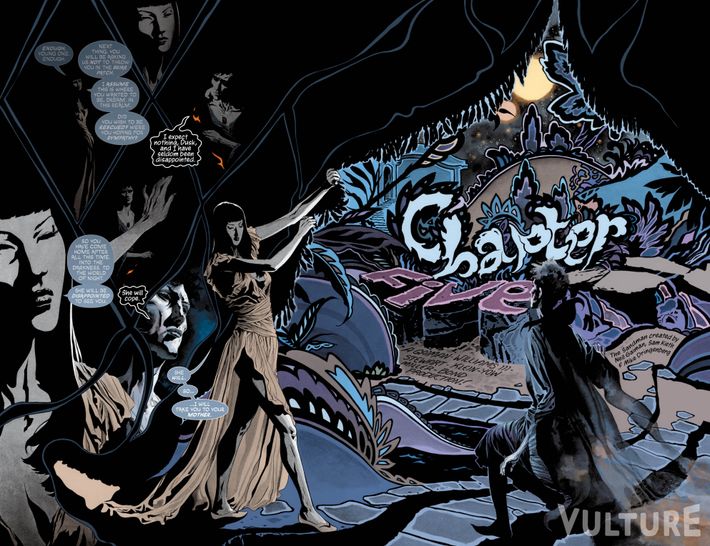
So, you say that you understand Dream’s motivations and past a little bit more; do you understand your own motivations from when you were in your mid-to-late 20s more now that you’re revisiting this period in Dream’s story?
No! [Laughs.] I look back on that Neil Gaiman, and he is a mystery to me. Not a very good mystery, but definitely mysterious. I’ll look at some of the stories — like “A Dream of a Thousand Cats,” I know I wrote that in a weekend, and I have no idea how I could write that in a weekend. I couldn’t write that in a weekend now. I am a much slower, much grumpier writer, worrying about what I’ve done, worrying about whether or not things will work.
The thing that freed me most with Sandman, peculiarly, was the fact that I tended to think of it as transient. All I knew was that there had to be a comic out every month and it had to be good enough to keep people reading. I didn’t want to get canceled. And it also had to be a comic that I would like to read. I was always trying to write a comic that I would like to read. I didn’t know if I was any good or not, but I didn’t care, either.
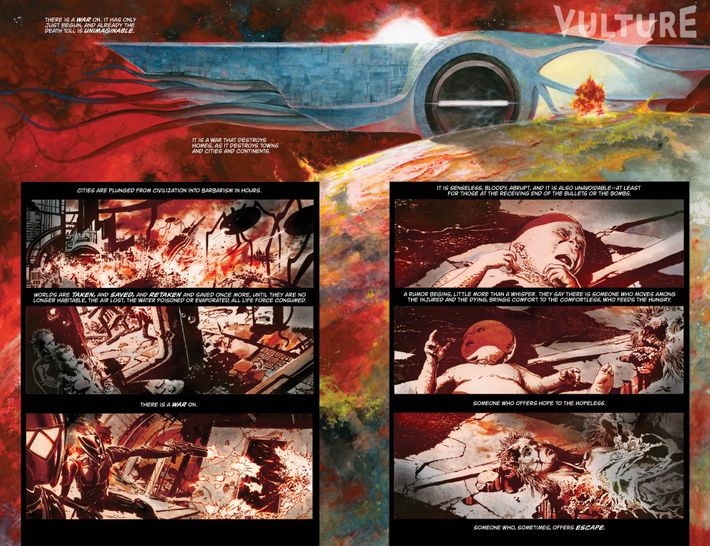
One final question: You say in the back matter of the fourth issue that your guidance to J.H. Williams included talking about how Overture is set in the DC superhero universe. Why was it so important that was in that universe?
Because Sandman started out in the DC Universe, and even though it wandered a long way away from the DC Universe, that was always where it was set in my mind. I loved doing little things like sneaking in Mogo, the planet-size Green Lantern from the Green Lantern Corps, into Sandman: Overture, or the Space Canine Patrol Agents — these strange little DC Universe things — because it seemed fun to say, We are in deep space, but we’re in the deep space of the DC Universe, the place where the planet Krypton could be. I played with the DC Universe cosmology and whatever aspects of the DC Universe cosmology that, when I was young and strange, I added to, threw in, and created.
To go back to something you asked before about being 26: The best thing about being 26 was that I didn’t know what I was doing. And the best part of not knowing what you’re doing is that nobody can tell you not to do something, including yourself. Because you don’t know that it’s a mistake, and not knowing it’s a mistake frees you to do it. Not knowing that it’s impossible frees you to do it. And I was so very lucky. These days I absolutely know what is possible, and I look at what I did back then and go, “How the fuck did that happen?”
